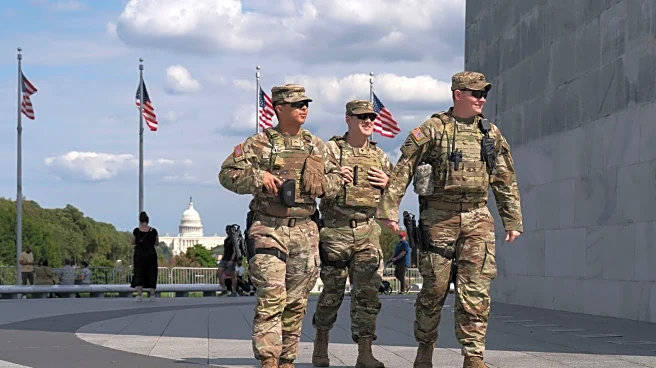What's Happening?
Washington, D.C. experienced a day of near-perfect weather conditions on Friday, with temperatures reaching a high of 82 degrees Fahrenheit, which is the average high for September 12 in the area. The day was characterized by a bright September sun and a lack of humidity, making it both ordinary and flawless. The morning started cooler, reflecting the transition towards autumn, but the afternoon warmth was typical of late summer. Despite the pleasant conditions, there is a noted lack of precipitation, particularly at Dulles International Airport, where both yearly and monthly rainfall are below average.
Why It's Important?
The weather conditions in Washington, D.C. highlight the ongoing transition from summer to autumn, a period marked by decreasing temperatures and shorter daylight hours. The lack of rainfall, however, raises concerns about potential drought conditions, which could impact local agriculture and water supply. The dry weather pattern observed since late August could have broader implications for the region's ecosystem and water management strategies. Residents and local authorities may need to consider water conservation measures if the dry spell continues.
What's Next?
As the autumn equinox approaches on September 22, Washington, D.C. is expected to experience further cooling and longer nights. The continuation of dry conditions may prompt local authorities to monitor water levels and consider implementing conservation measures. Residents might also need to adjust their water usage habits in response to the ongoing dry spell. The weather patterns in the coming weeks will be crucial in determining whether the region will face any significant water shortages.
Beyond the Headlines
The current weather conditions in Washington, D.C. serve as a reminder of the delicate balance between seasonal changes and environmental sustainability. The lack of rainfall could have long-term effects on the region's natural resources and biodiversity. It also underscores the importance of proactive environmental planning and the need for communities to adapt to changing weather patterns. As climate change continues to influence weather systems globally, localities like Washington, D.C. must remain vigilant and responsive to these shifts.












